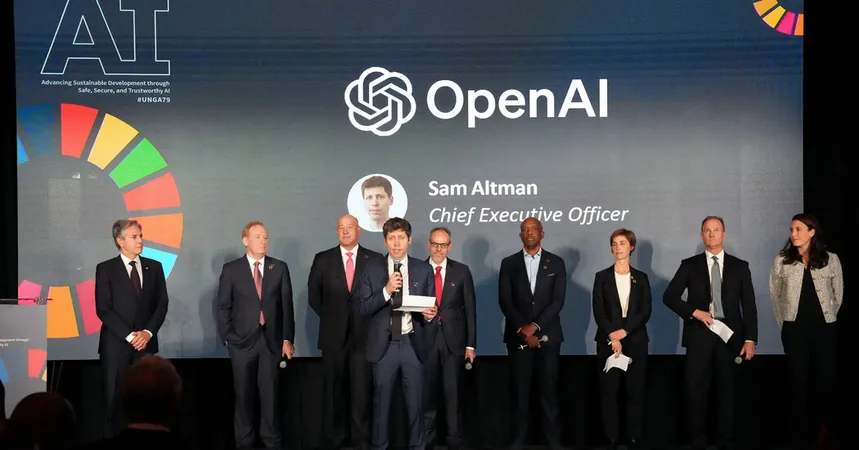
OpenAI: The Rapid Rise Drowned in a Sea of Red Ink
2024-09-28
Author: Jessica Wong
OpenAI: The Rapid Rise Drowned in a Sea of Red Ink
In a whirlwind of growth, OpenAI, the innovative force behind ChatGPT, is not just boasting about its skyrocketing revenues but concealing staggering losses that have left investors questioning its future viability.
According to internal financial documents reviewed by The New York Times, OpenAI’s monthly revenue soared to a staggering $300 million back in August, an astronomical increase of 1,700% since the beginning of 2023. The AI powerhouse expects to see annual revenues surpassing $3.7 billion this year, with ambitious projections suggesting this number could reach $11.6 billion by next year. However, the company anticipates losses nearing $5 billion for 2023 due to hefty operational costs, including employee salaries and extensive cloud computing expenses.
Amidst this financial rollercoaster, OpenAI is looking to raise a whopping $7 billion in a new investment round that could push its valuation to a jaw-dropping $150 billion—making it one of the most valuable private tech firms ever. But this influx of capital comes at a critical juncture as the company grapples with the exits of key executives and researchers, including recent high-profile departures of CTO Mira Murati and others.
Even though OpenAI’s revenue reached new heights this year, the details of their expenditures remain murky. Major expenses include their ongoing agreement with Microsoft, which has invested more than $13 billion into the startup. OpenAI spends a significant portion of these funds on Microsoft’s cloud services, essential for running its popular products.
The explosive popularity of ChatGPT, which became a household name after its launch in November 2022, has fueled this meteoric rise. As of June, nearly 350 million individuals utilize OpenAI’s products monthly, up from just 100 million users in March. The company estimates revenue from ChatGPT alone to hit $2.7 billion this year, marking a significant leap from $700 million last year. This has been aided by a surge of third-party developers—over a million—integrating OpenAI's technology into their services.
However, the meteoric success comes at a cost, quite literally. OpenAI plans to increase its subscription price for ChatGPT users by $2 by year-end, eventually aiming for a $44 monthly fee over the next five years as they continue to expand both user engagement and service capabilities.
Despite these ambitious plans, OpenAI is finding it increasingly difficult to keep expenses in check. This challenge mirrors the journeys of several other tech giants that have once soared, only to grapple with the complexities of rapid growth and internal structural changes. OpenAI’s future remains precarious as they navigate the transition from a nonprofit entity to a capped-profit company, a move designed to attract investors while limiting their returns.
The stakes are high—OpenAI must navigate its financial restructuring carefully or risk losing not just edge, but the very essence of its radical innovation. As the world closely watches, the big question looms: can OpenAI balance growth with sustainability, or will it crash amidst its high-flying ambitions?
Stay tuned as we continue to unravel the complexities behind OpenAI's intriguing financial saga—a story that is far from over.


 Brasil (PT)
Brasil (PT)
 Canada (EN)
Canada (EN)
 Chile (ES)
Chile (ES)
 Česko (CS)
Česko (CS)
 대한민국 (KO)
대한민국 (KO)
 España (ES)
España (ES)
 France (FR)
France (FR)
 Hong Kong (EN)
Hong Kong (EN)
 Italia (IT)
Italia (IT)
 日本 (JA)
日本 (JA)
 Magyarország (HU)
Magyarország (HU)
 Norge (NO)
Norge (NO)
 Polska (PL)
Polska (PL)
 Schweiz (DE)
Schweiz (DE)
 Singapore (EN)
Singapore (EN)
 Sverige (SV)
Sverige (SV)
 Suomi (FI)
Suomi (FI)
 Türkiye (TR)
Türkiye (TR)
 الإمارات العربية المتحدة (AR)
الإمارات العربية المتحدة (AR)